The next chapter in The History Project’s story
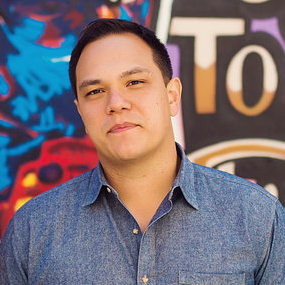
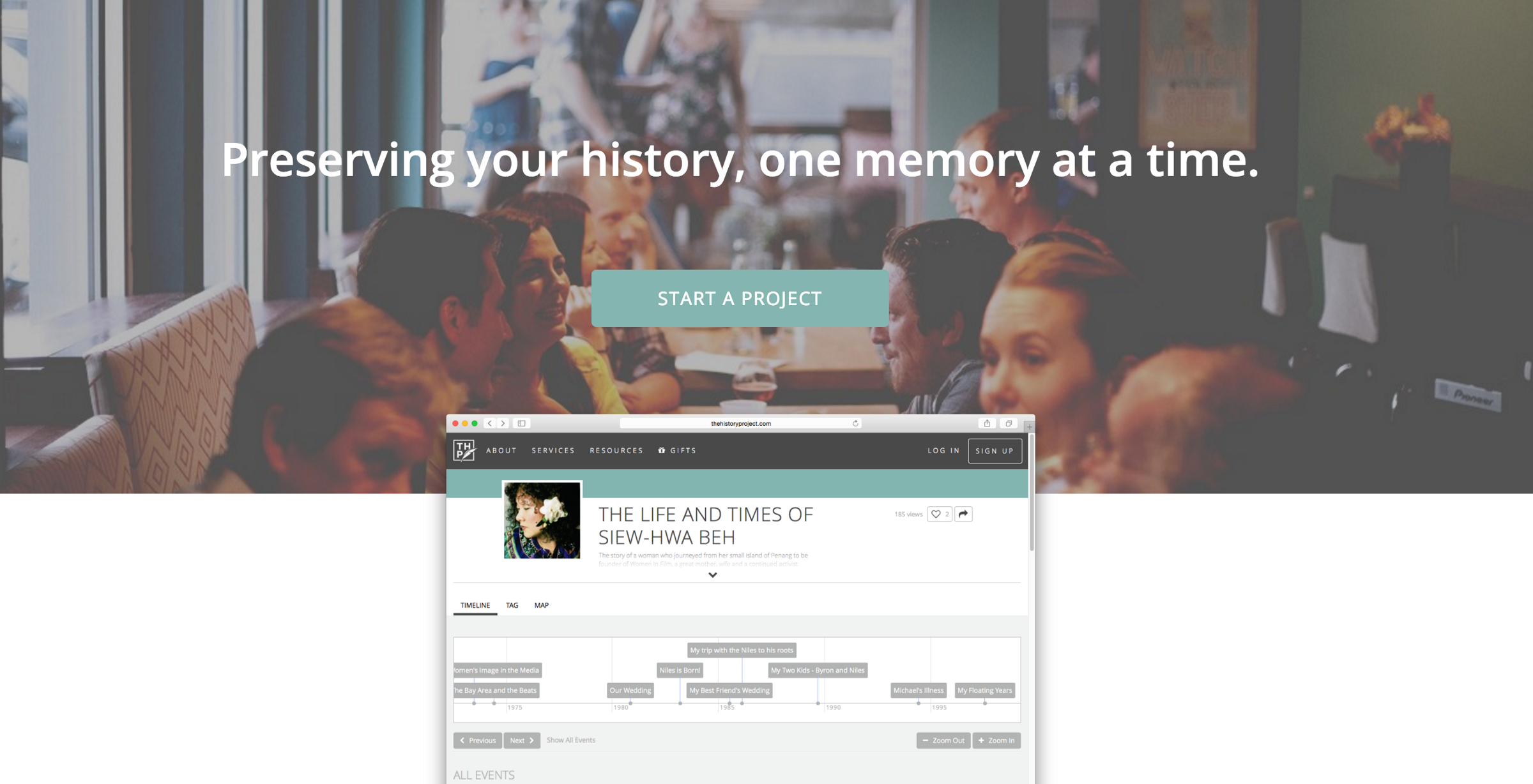
The History Project, the Matter Four startup that creates rich digital narratives through interactive timelines, has just added another prestigious investor to its list: The Associated Press. AP joins The New York Times and Matter Ventures in backing the Oakland-based company’s $2M seed round, which was announced in November of last year.
The History Project empowers users to create digital time capsules composed of multimedia content including audio, video, photos, documents, and press clippings. Many of the stories told through its platform are deeply personal journeys, especially those created by users documenting the lives of their forebears.
Matter Managing Partner Corey Ford says it’s rare to see a media startup deliver such a deeply emotive experience: “When Niles [Lichtenstein, CEO of The History Project] unveiled a sneak peek of The History Project at our Demo Day, people were moved to tears thinking about how badly they wanted to preserve the history of their loved ones. This team has nailed a deep, unmet need and built a scalable startup that truly helps people produce meaningful media.”

I sat down with The History Project’s CEO, Niles Lichtenstein, to learn more about this important moment in THP’s own history.
RB: Congratulations on adding The Associated Press as an investor in your seed round — that must mean a lot to you as CEO?
NL: It’s great for us because it brings another great media institution, along with the New York Times, into our list of investors and backers. These are people who are thinking in a forward way in the media space but also have longstanding institutional backgrounds as well. We’re also announcing our Advisory Board that we have formed over the past few months. We very much handpicked our board with a lot of intentionality. Everyone from someone like Dean Drako who was the founder and former CEO of Barracuda Networks, because storage and security, while not the sexiest part of your life narrative, is really a critical and important to how we ensure things are preserved and maintained. We’ve seen a number of use cases for celebrities and artists, so we brought on Jay Brown who is the CEO of RocNation. It’s Jay Z’s talent company and represents athletes, performing artists, actors, stars like Shakira and Rihanna. [They’re] finding new ways to tell their life stories, share their inspirations, and engage with their fans about who they are in a non-social media format, a more curated format.
The AP is in some ways the record-keeper, especially of photos and videos that have meant something to our lives from a reporting and journalistic perspective.
RB: What does this new investment and expertise bring to The History Project? What can you now do that you wouldn’t otherwise have been able to?
NL: All of the assets including our investor assets are ways for us to create better technology for telling stories, build a wider network and distribution of stories, and bring in new capabilities like a deeper level of digitization and taking physical assets from offline to online. So [the focus] has really been around, “how do we accelerate the product and its adoption through these advisors?” The AP’s a great partner from two perspectives — one, thinking through how they can leverage the tools for interactive reporting within their own company. Then, as a content angel, understanding how we can more deeply integrate with their content so that we will be able to clip different pieces into people’s history projects. At the moment we have the Time Loop button which can bring back music from that period but we want to integrate popular culture, news items of interest. Things that spur memories and drive people to better understand their own history.
RB: You also mentioned burgeoning use cases for people in the public eye to connect with fans. Was that part of your original vision for The History Project? Did you imagine pop stars and celebrities would be using it?
NL: Not necessarily but I felt something like that could happen. It’s not that we’re trying to sell the pop stars — I think [The History Project] shows that, “hey, your life is more than just the social, the tweets and Facebook feed.” Your life was a set of inspirations, a set of moments, a set of home videos mixed with journals. That’s your life. And that’s what inspires people. My hope is that even if a celebrity had a public history project in some way they would keep a private history project too. We’ve been really getting into this notion of being almost like a Pinterest for emotional belongings, in a way. That’s been a big part of what we’ve been aiming for.
How do we become that place where you clip the world around you, whether it’s the media you create or media you consume, and put the best of that stuff that has an emotional resonance with you into a place that you call your own so it becomes your authentic identity?
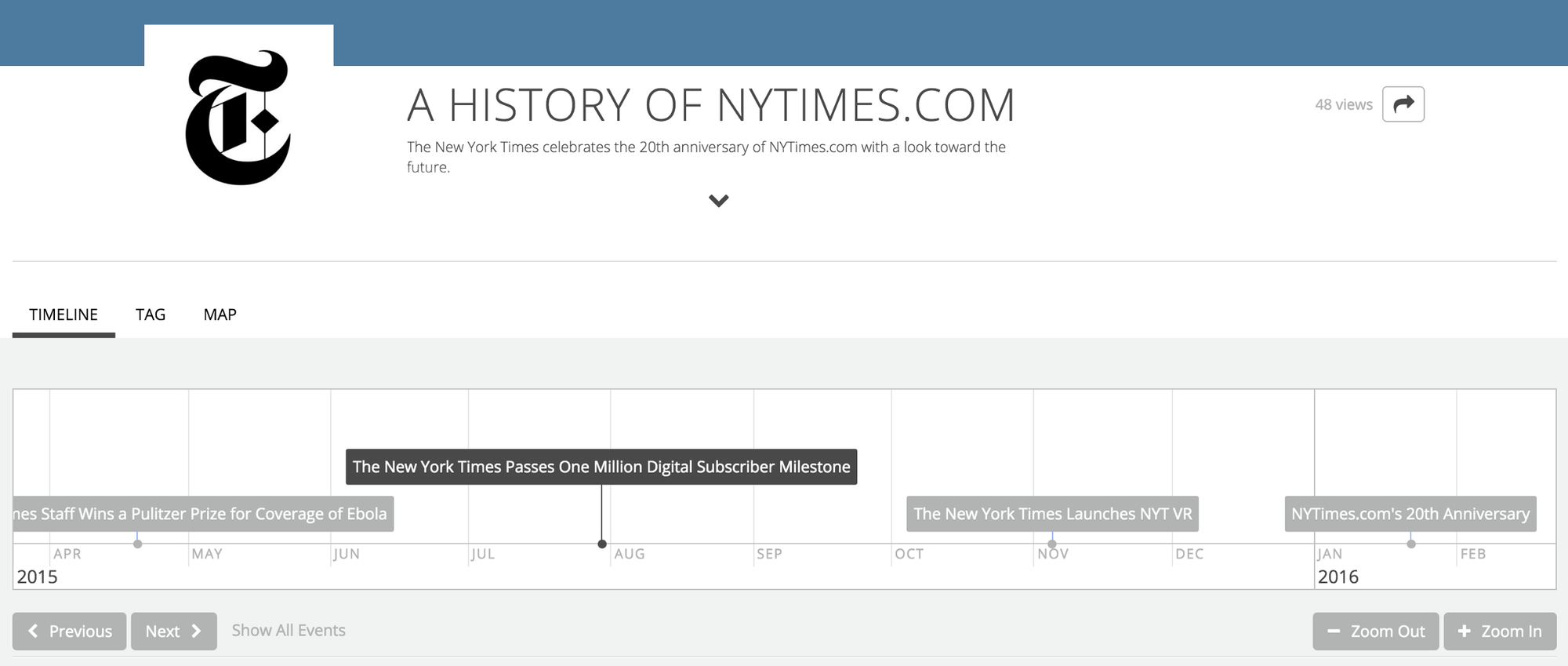
RB: The New York Times and HBO are probably your most high profile customers. How have they been using The History Project?
NL: The New York Times used it for their own 20 years of nytimes.com. We’re still seeing where it might fit into their their other work that they’re doing, looking at engaging and trying to find different routes to integrate what they’re offering. HBO Films did a documentary called The Diplomat which was all about the life of Ambassador Richard Holbrooke. They released all these never-seen-before like letters and personal photographs. The director is David Holbrooke, Richard’s son. He was on his own journey to capture his father’s content so it fit really well with what we were doing. We’re going to be featured at the Mountainfilm Festival at Telluride, just as a way for other documentarians and film producers and directors to capture their stories in an interactive, immersive, visual way to go along with their movies. Especially those that are about specific individuals or collective groups over time.
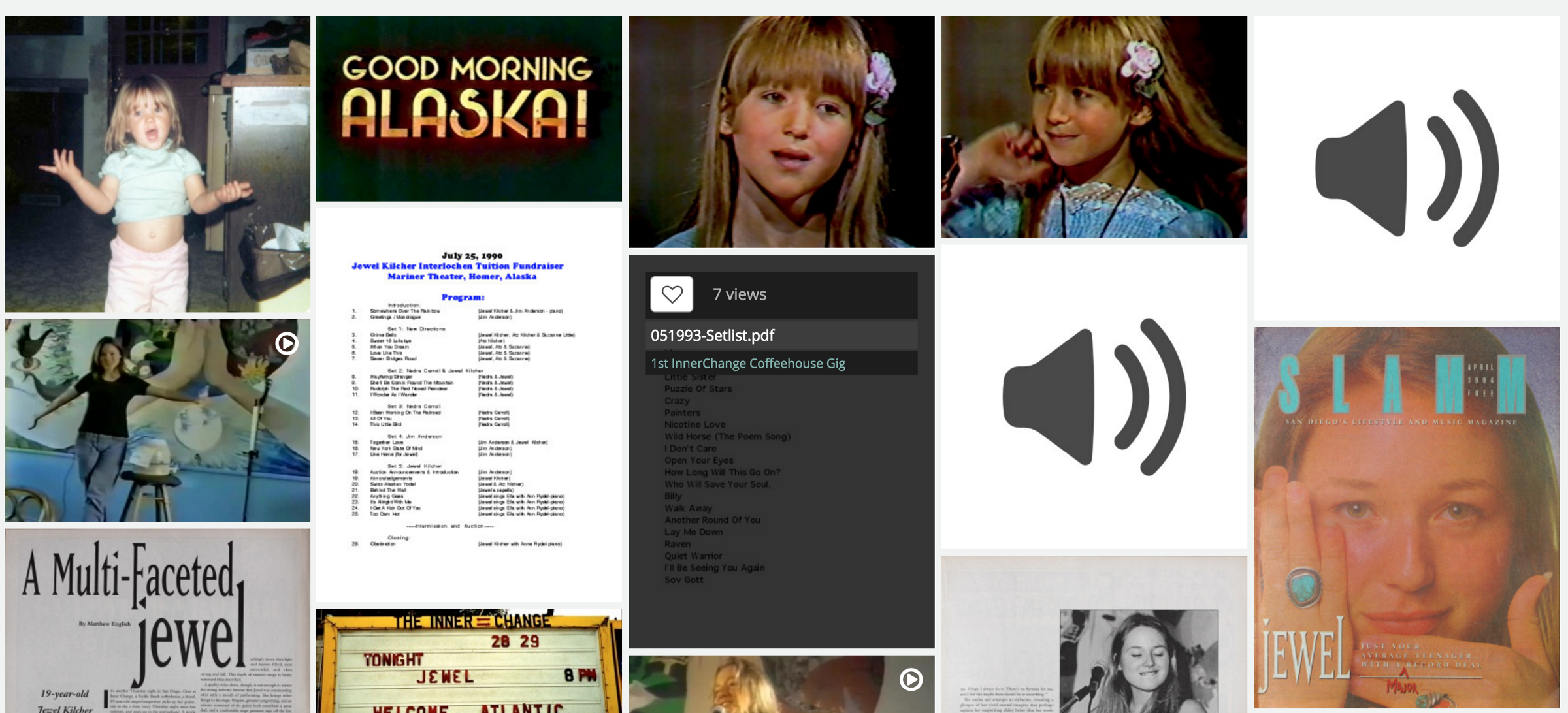
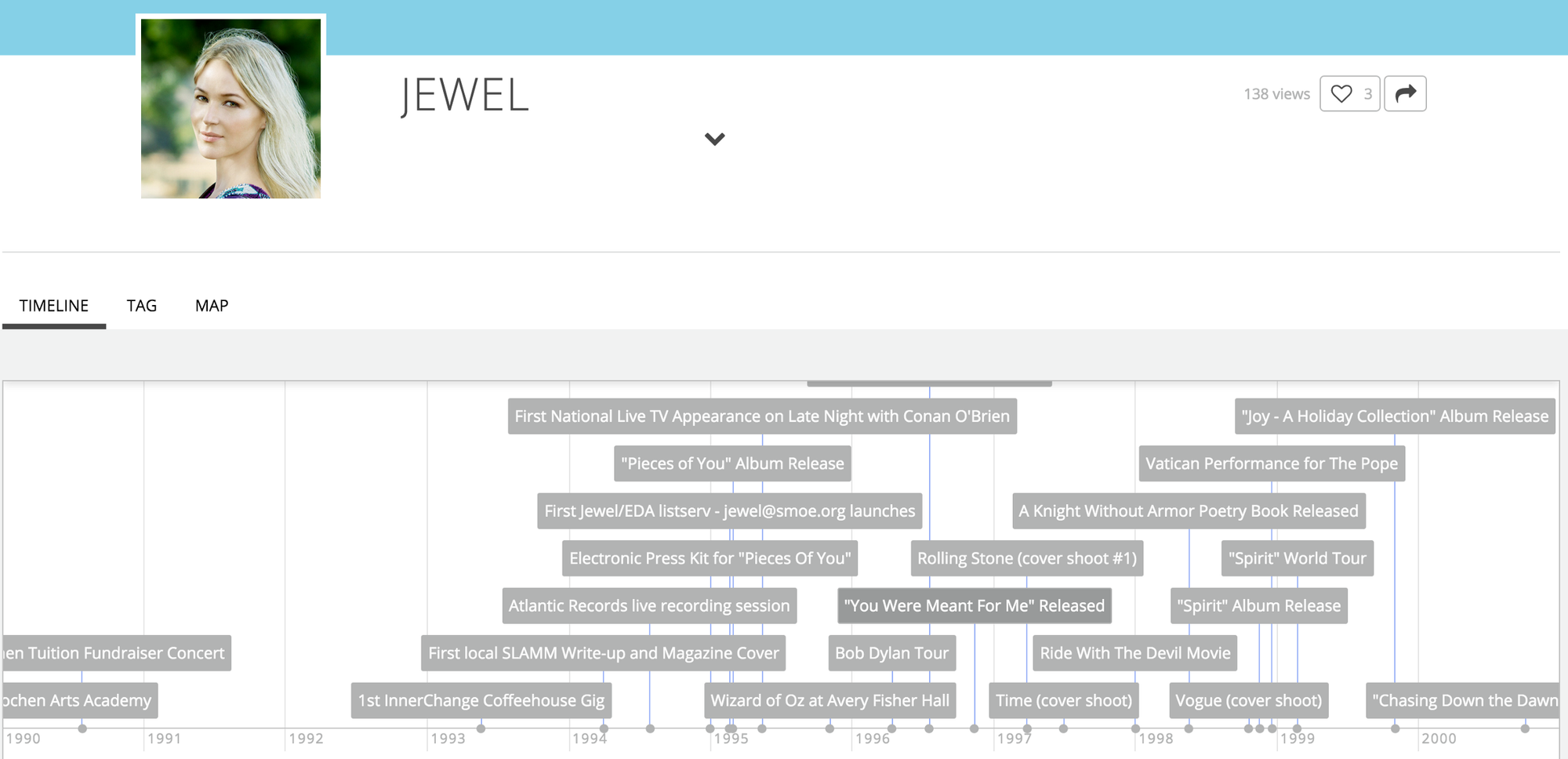
RB: So you’re able to complement, with another medium, those chronological timelines explored in film. People can dive deeper into a story, going offline to online, through a history project. Do you have any other collaborations in the pipeline?
NL: We have some coming up with the AP. You know, we’ve actually been starting to move more towards the consumer. One of the interesting projects we’re doing with consumers is with a group called Senior Planet. Their focus is “Aging with Attitude”, which I love. On April 1st we’ll have an exhibit in Chelsea where retired artists are going to profile their creative life histories on The History Project, so people can go and actually interact with that — those are some of the stories that are really pretty wonderful. Also the singer-songwriter Jewel came out with her history project. She released her autobiography and wanted to find an interactive way to have people engage with her project as well. And that was really awesome. We had stuff like never-released-before audition tapes. We just created something with the Harvard Hip Hop Archive. They started inducting a few albums into Harvard’s well-known Loeb music library so it’s now hip hop being recognized on that level, they’re curating all these “classic crates”…and so they used The History Project as their digital archive for the first four albums they announced.
RB: You’re still very active in the Matter community and have been part of our most recent Alumni-in-Residence program. How has that been helpful to you as a company?
NL: We’ve been coming here needing, wanting and having a community of smart people who are going through this [same thing]. Even if we’ve grown quite a bit in the last six to eight months, you know, we still definitely want our support group! So first and foremost just this a level of support and engaging with people going through things; secondly, just having a place to bounce ideas off folks and getting some candid feedback in a place where norms and expectations are already established is important.
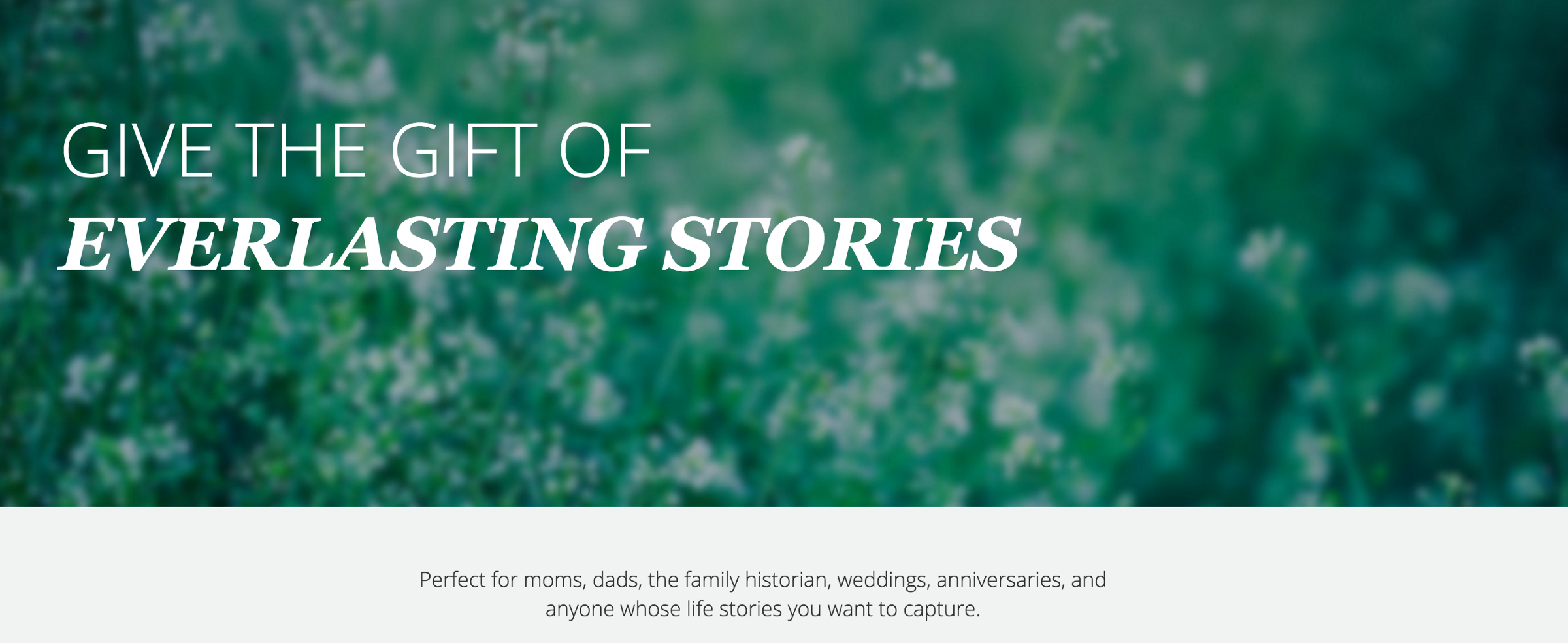
RB: So what does the next few months hold for The History Project?
NL: A big area of focus is making building a life story feel smaller, quicker. We are also continuing to improve mobile. We made the whole site responsive, which was great, but we want to upgrade the mobile experience. And we’ve got a big Mother’s Day campaign coming where people will be able to do something very low touch and light like engaging in a memory from mom, being prompted about a memory that you can add your own voice and photo to and sent that off to her. We’re moving towards a language that we think is a bit more consumer friendly too: the notion of having a memory board. You’ll still have your timelines and your maps but we’re lowering the barrier to entry to creating a History Project.
To build your own timeline on The History Project, sign up for an account.

